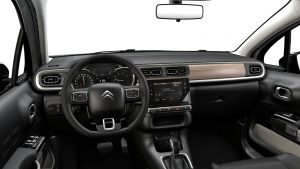



William Crozes/Continental Productions
Is this the future of the CD- and D-segment family car? Citroën has unveiled its C5 X, the third generation (if you don’t count the C5 Aircross) of the C5 line, blending saloon, estate and SUV ideas.
Sales of conventional saloons and estates in this segment have been dropping for some time. Ford has already said it will not replace the Mondeo after 2022, bringing to an end a line that could be traced back to the Consul Cortina of 1962. There have been suggestions that Opel, Citroën’s sister brand, will replace the Insignia with a crossover, possibly a car closely related to this one.
The lines are certainly more blurred with the C5 X. Traditionally, a crossover would have meant something like a Subaru Forester, a station wagon format more raised than a traditional car, but lower than an SUV. Here Citroën takes influences from numerous genres. It is a sleek, two-box shape, that if viewed without the 19-inch wheels, could be taken to be a shooting brake, an estate car with less loading capacity because of a sloping rear—think Mercedes-Benz CLS or even the Audi Q8. The six-light glasshouse even recalls Robert Opron’s Citroën CX (and specifically the CXperience concept of 2016), which no doubt will please Citroënistas. Up front are thin LED headlights that give a V shape when lit, a Citroën design signature that started with the 2020 C4. The bespoilered rear deck emphasizes that this isn’t a regular estate; curiously, when viewed from some front three-quarter angles, the D-pillar looks upright, and even recalls the outgoing C5 break.
Happily, the C5 X has an airy glasshouse, doing away with the massive C-pillars that have plagued car design for a decade. This helps with bringing light in, while also aiding visibility. One can only hope that it is the beginning of the end of the cocoon, which may have emerged in times of great uncertainty, where people wanted to feel enveloped and secure. If Citroën’s trend-watchers have it right, we might come to feel more open and embracing of the outside world again.
Those 19-inch wheels raise the car’s stance, but in an age where the crossover and the SUV are not niche vehicles, but mainstream ones, they do not look oversized. Interestingly, Citroën’s French rival Renault may have contributed to that, with intentionally large wheels for the Scénic and Espace, with a similar philosophy of blending genres with an eye to courting mainstream SUV buyers who want a more commanding driving position. More opportunity, then, for a future designer to claim a successor is ‘lower, wider, longer’, the romance of postwar US design.
Its sleekness is perhaps only compromised by the transverse front-wheel-drive layout, which necessitates the position of the front wheels, a design compromise evident on the Citroën C6 in China, but better hidden here. One might think that Citroën has gone adventurous here—though not to the level of the DS—because of its recent poor sales in China. When in doubt, design your way out—it worked for Chrysler and its LH sedans in the 1990s.
Under the skin is active suspension, with Citroën claiming (not for the first time in its history) a “magic carpet” ride. There are what the company calls its Progressive Hydraulic Cushions that relax the suspension more. Handling isn’t the top priority here, having an interior that’s lounge-like and floating is.
The interior emphasizes width (externally the car measures 1,865 mm in this respect, which is probably typical for a grand routier of this age). Citroën says its Advanced Comfort seats are particularly capacious in the second row, while the boot has a 545 l capacity. There’s more refinement, the company points out, with the plug-in hybrid version running in pure-electric mode, which it can do for 50 km, up to 135 km/h. Acoustic-laminated front and rear windows keep things insulated further.
There is a head-up display that Citroën says is a step toward augmented reality, driving assistance features, a new infotainment interface powered through a 12-inch central touchscreen, voice recognition, and a customizable display. Safety systems use the radar, cameras and sensors. There is level 2 autonomous driving, with Highway Driver Assist, using the adaptive cruise control with Stop & Go and lane-keep assistance. And as one would expect in 2021, rear cross-traffic alert, a 360-vision display that plots the area around the car on the touchscreen to aid man, and hands-free access.—Jack Yan, Founder and Publisher




William Crozes/Continental Productions









